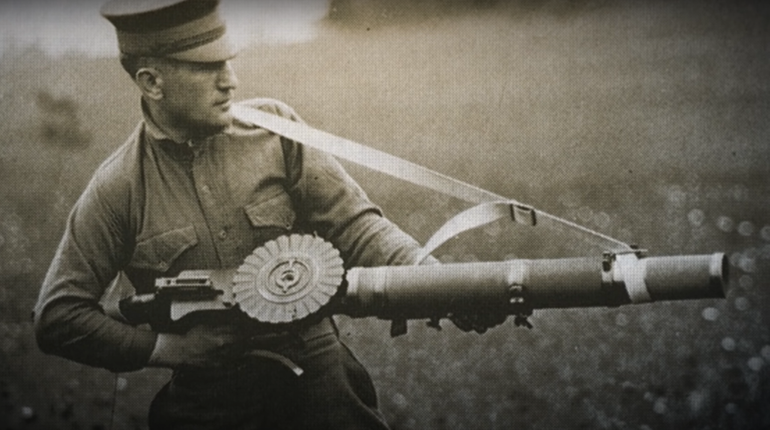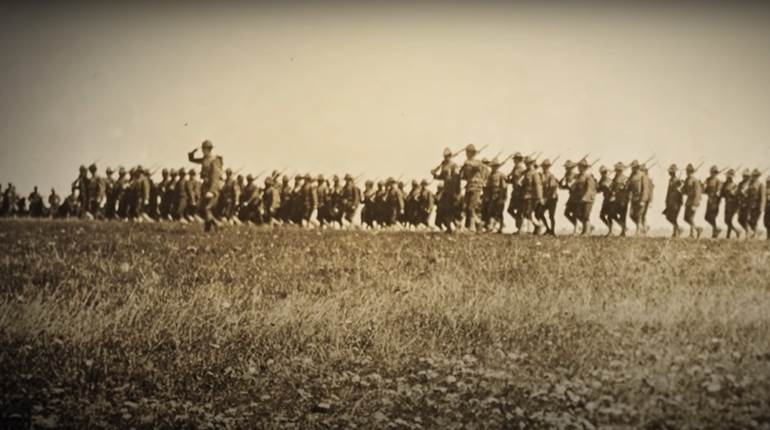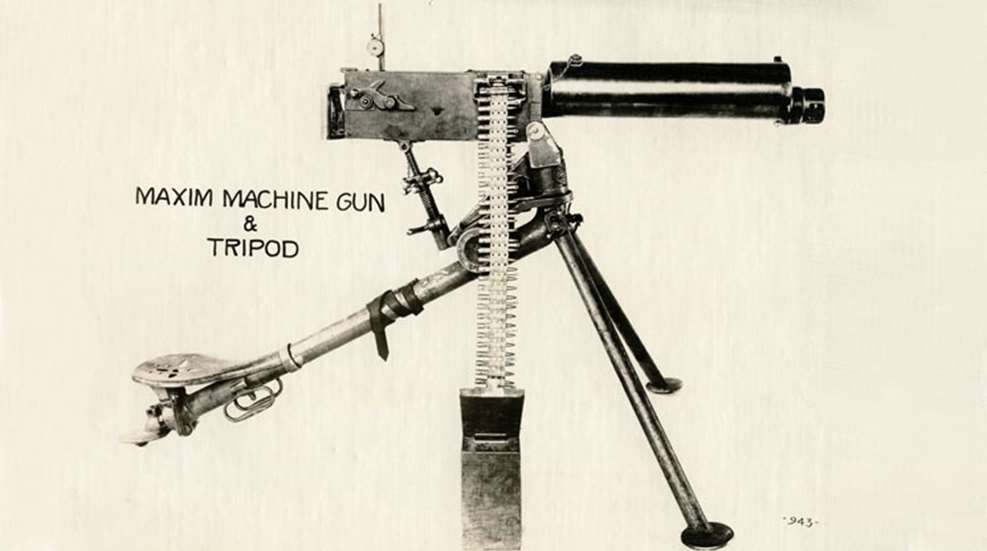
“Hang your chemistry and electricity! If you want to make a pile of money, invent something that will enable these Europeans to cut each-other’s throats with greater facility.”
This is the sage advice that American-born inventor Hiram Maxim received during a trip to Vienna in 1882. Maxim wasted little time putting his creative mind into action, following up on the financial and ultimately firearm-related advice.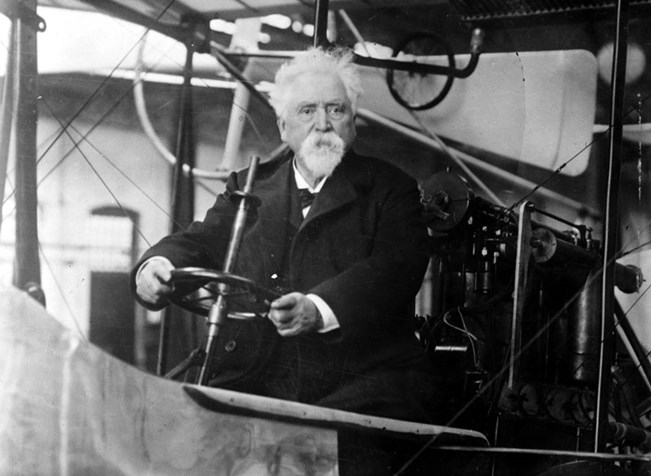
Sir Hiram Maxim: American-born inventor extraordinaire, and the man who conceived what would become World War I’s grim reaper.
Maxim was an energetic genius and an inveterate inventor. His developments included a pocket inhaler for bronchitis sufferers, a larger steam inhaler, a curling iron, magno-electric equipment, demagnetizing equipment, stabilizing equipment for ocean-going vessels, automated sprinkler systems, various types of engines and even coffee substitutes. Then there were his numerous patent disputes with Thomas Edison over Maxim’s claims to the lightbulb.
For his famous machine gun, Maxim took inspiration from a childhood memory. When firing a rifle as a boy, Maxim had been knocked over by the recoil. This experience focused his attention on capturing and redirecting the recoil energy to automatically operate the gun, and by 1885 Maxim had patented gas-, recoil- and blowback-type firearms.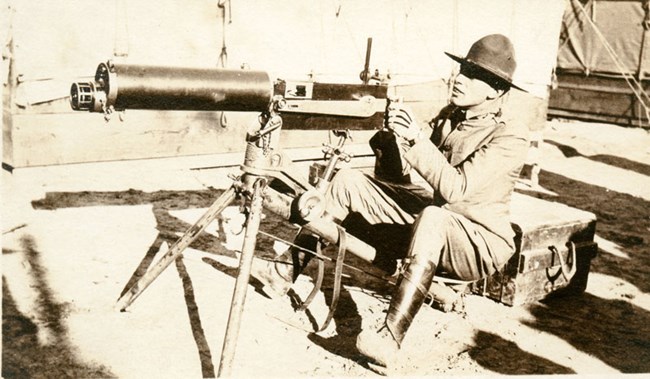
The M1904 Maxim gun on the Mexican border, 1917.
An American ex-patriate living in England, Maxim acquired property in West Norwood. There he developed his innovative automatic gun, which he regularly tested in his garden. Apparently Maxim put no thought into the invention of ear protection, as in his later years he became quite deaf from the regular testing of his machine-gun designs.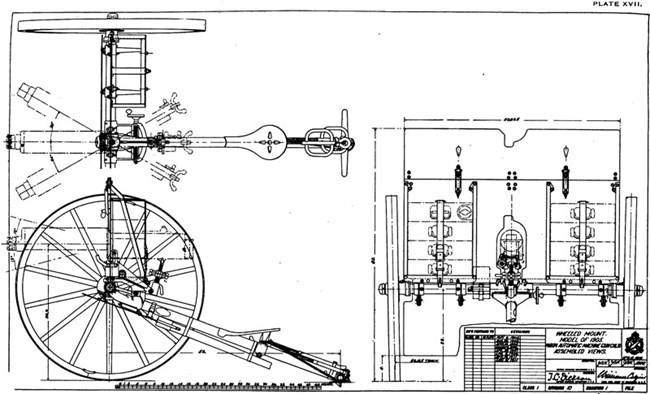
The 1905 wheeled mount for the M1904 Maxim machine gun.
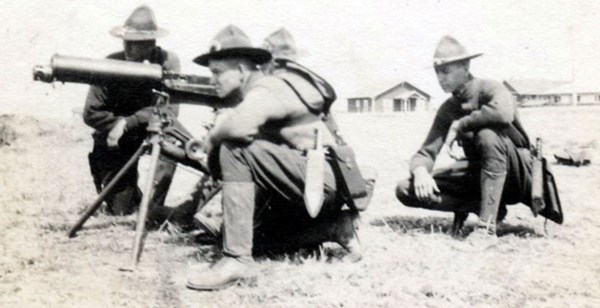
Men of the 162ndInfantry Regiment (Oregon National Guard) train with the M1904 Maxim gun during World War I. Note they also have U.S. Army Model 1917 Bolo Knives.
By 1897, the Vickers Corporation took over, and Maxim-Nordenfelt became Vickers, Son & Maxim (VSM). Maxim’s machine gun was revised and improved, and in 1911 the Vickers machine gun was born. Chambered in .303 British, the Vickers served British and Commonwealth armies until the early 1960s with foolproof reliability.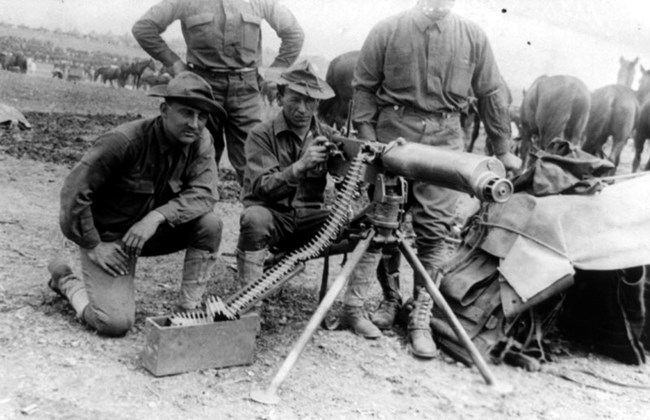
Guarding the troubled border with Mexico: U.S. Cavalry troopers with a M1904 Maxim gun during early 1917.
Maxim’s core design was licensed and served as a grim reaper on both sides of World War I. In Germany, the Maxim gun became the MG08 and the MG08/15. In Britain it was the Vickers machine gun. In Russia (and later the Soviet Union) it was the Pulemyot Maxima PM1910. All of these machine guns did their deadly work through World War I, the many European conflicts of the interwar period and continued on through World War II. The Soviet Maxim guns were found in the hands of communist insurgent forces through the 1960s. 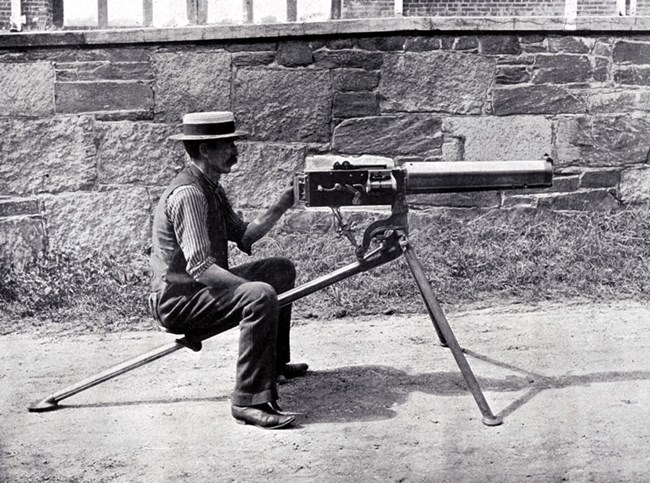
Hiram Maxim’s original design caught the attention of the U.S. Army as early as 1887. Off-and-on testing and frequent revisions finally yielded the M1904 machine gun.
The Maxim Gun In America
The U.S. Army took an interest in the Maxim gun as early as 1887. This started a prolonged period of testing, modification, revision and renewed testing. The U.S. Model 1889 and Model 1900 Maxims were the primary test-beds, continuing off and on until 1904, when the “Maxim Automatic Machine Gun, Caliber .30, Model of 1904” was finally adopted. Until that time, rapid fire arms in U.S. service were generally restricted to Gatling Guns and a few M1895 Colt Automatic Guns that were mostly employed by the U.S. Navy.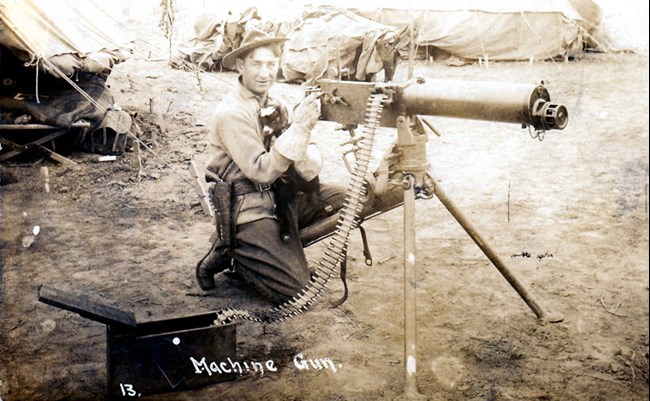
The Old West meets the New World of Firearms: the vestiges of cowboy-style remain with this U.S. Cavalry trooper posing with his mascot and a M1904 Maxim machine gun.
The Maxim had two prime competitors during the last days of the 19thCentury. The U.S. Army tested the water-cooled Maxim against the air-cooled Hotchkiss and Colt machine guns, as the review board concluded that these three were the finest automatic arms in the world. Captain John T. Thompson (who would later develop the Thompson submachine gun) was part of that three-man, expert review board. The Hotchkiss was considered the simplest design, but the review board objected to its feed system that used 30-round feed strips. The Maxim was noted for its sustained fire ability, and the Colt generally ran third in all test categories.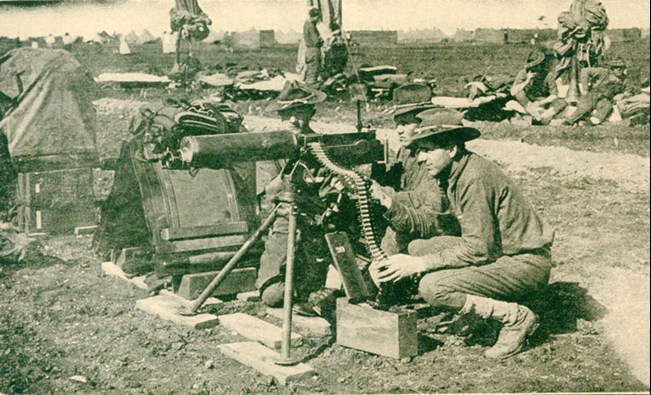
The M1904 is featured in a postcard image from the U.S. troop deployed to the Mexican border in 1916.
Thus, America’s military waited until the 20thcentury to adopt its first rifle-caliber heavy machine gun. They got every pound of what they paid for, as the Maxim was truly a heavy machine gun, with the gun and tripod combined weighing in at 142 lbs.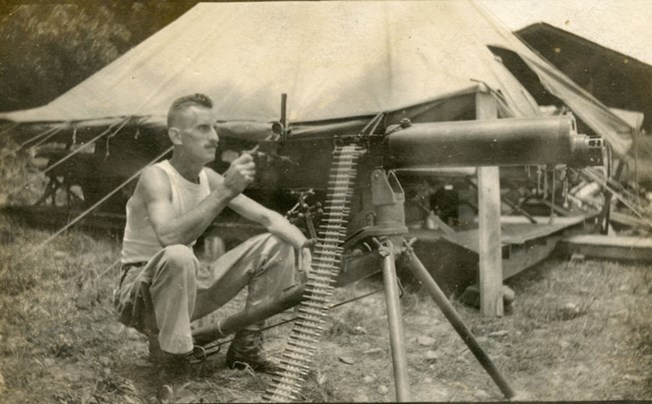
The M1904 Maxim gun featured a massive tripod with a built-in gunner’s seat.
The first 50 American Maxim guns were chambered in .30-’03, and these guns and their tripods were made in England by Vickers, Sons & Maxim (VSM).After some initial challenges, Colt’s Mfg. Co. began producing the Maxim gun in the United States in 1908, chambered in the updated U.S. .30-’06 Sprg. Cartridge. The initial 90 M1904 Maxim guns made by VSM were soon rechambered (by Colt) to .30-’06. Ultimately, 287 M1904 Maxim machine guns were manufactured. During 1913, many of the M1904 Maxim guns were placed in storage—124 of of which were housed at Springfield Armory.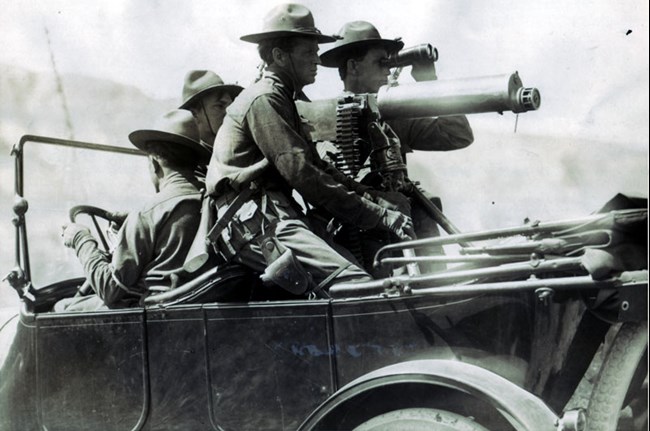
Motorized mount for the M1904 Maxim heavy machine gun with the 8th Cavalry near El Paso, Texas, during 1917.
The M1904 was used in operations in the Philippines and Mexico, but reports of its use in actual combat are elusive. Cavalry officers considered the Maxim “too slow and cumbersome” when brought into action. At 140-plus pounds for the gun and tripod (without ammunition), the infantry was not excited to lug it around either. The 1917 edition of the M1904 manual describes five mule loads required for the gun, tripod, ammunition and accessories. Each machine gun company was issued four Maxim guns and, thus, 20 mules to move them. During World War I, the M1904 emerged from storage to help train a new generation of American machine gunners, and prepare them for the rapid-fire needs of modern warfare.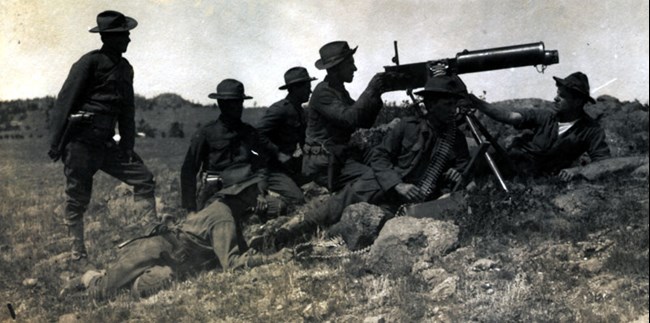
The shape of things to come: U.S. troops in training with the M1904 Maxim prior to World War I.
According to machine-gun researcher, collector, and arms expert Dolf Goldsmith, the U.S. Model of 1904 never saw combat. I’m inclined to agree with his assessment, but the shooter in me wonders if Army gunners could resist the temptation to squeeze off a few bursts regardless of how much muscle it took to move a hefty Maxim around. Several images that I have found (and shared here) could indicate that a handful of the American Maxim guns may have fired shots in anger during the 1916-1917 border crisis with Mexico. If only these century-old photos could talk—what other stories might they tell us of the Maxim in those troubled times?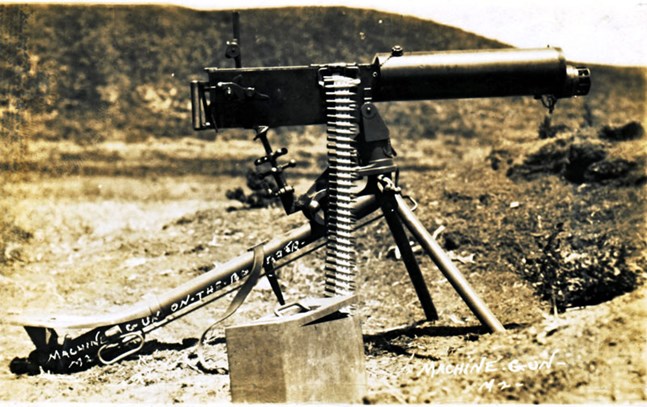
A vintage postcard says it all: “Machine Gun on the Border.” Could it be that the M1904 might have fired on Pancho Villa’s men during the Mexican Punitive Expedition?
“It will be seen that it is a very creditable thing to invent a killing machine, and nothing less than a disgrace to invent an apparatus to prevent human suffering."—Sir Hiram Stevens Maxim
Additional Reading:
Grim Reapers: The Machine Guns of World War I
Throwback Thursday: Dr. Shush!













